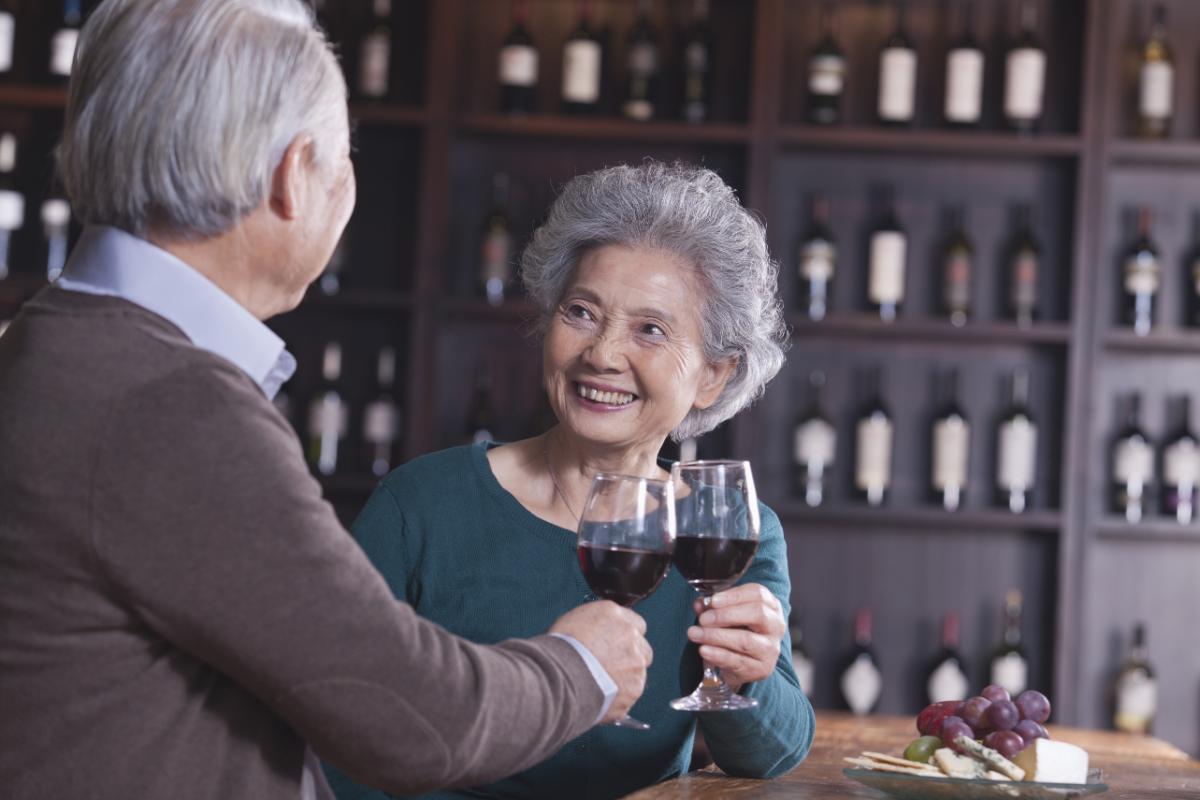
Wine is savored and has been part of our human culture since the beginning of time.
It has represented an important aspect in the progress of human civilization, has religious significance in the Catholic and Orthodox churches and is an integral ingredient in many cuisines. It is also known to be used as an elixir for medicinal purposes and can be good for your physical health when consumed moderately.
Just how much wine per day is considered healthy?
The American Heart Association recommends 1-2 drinks per day for men and one drink per day for women. A glass is defined as four ounces of wine.
Modest consumption can offer Asian wine drinkers several health benefits such as:
- Cancer Prevention
Wine contains antioxidants that fight free radicals. A study by the University of Barcelona has surprisingly shown that drinking white wines instead of red offered additional benefits. Read more here: https://www.ncbi.nlm.nih.gov/pubmed/10370874
- Lowers the risk of Stroke Damage / Alzheimer’s/ Parkinson’s Disease and Dementia
Resveratrol which is found in red grape skins and seeds increases the levels of enzymes in the brain that protect nerve cells. https://www.ncbi.nlm.nih.gov/pubmed/15455646 and https://www.strokesmart.org/article?id=233
- Thins the Blood
Alcohol may act as a thinner, therefore, assisting to break up blood clots.
- Raises good cholesterol
Resveratrol may increase levels of good cholesterol HDL and decrease bad LDL cholesterol
- Prostate Cancer
Harvard Men’s Health Watch reported that men who consume 4-7 glasses of red wine per week, were half as likely to be diagnosed as those who don’t drink. https://www.health.harvard.edu/press_releases/prostate-benefits-from-red-wine
- Breast Cancer
Red grape skins and seeds contain chemicals that slightly lower estrogen levels. https://www.cedars-sinai.org/newsroom/moderate-red-wine-drinking-may-help-cut-womens-breast-cancer-risk-cedars-sinai-study-shows/
- Prevention of Type 2 Diabetes: The Chinese Academy of Sciences
Deduced from an experiment on mice that the chemical Resveratrol found in the red grape skins and pips can improve sensitivity to insulin. The link to humans hasn’t been proven yet but the scientific innovation is encouraging. https://www.medicalnewstoday.com/releases/84439.php
- The Fountain of Youth – Slowing the aging process
Harvard Medical School published their findings https://hms.harvard.edu/news/new-study-validates-longevity-pathway showing that the wonder chemical Resveratrol and SIRT1 gene, found in red wine are most certainly linked to improved health and longer life span.
The act of popping a cork changes a regular get-together into a festive celebration. Feelings of jubilation and happiness promote love and well wishes, and these emotions are certainly good vibes that we want to encourage for our mental well-being.
Asian Flush
Asian Flush (also known as Asian Glow) is a condition that wine drinkers of East Asian heritage should be aware and mindful of.
Symptoms of this condition include:
- Experiencing redness of the face and upper body
- Nausea
- Headaches and dizziness
- Difficulty breathing
- Red eyes
- Swelling of the cheeks.
Why do Asian people, in particular, suffer from this syndrome?
Asian Flush is the result of an inherited genetic deficiency in one of the enzymes involved in the breakdown of alcohol in the liver: aldehyde dehydrogenase.
In a healthy liver, alcohol is broken down in two stages. In the first step, the enzyme alcohol dehydrogenase changes alcohol into a rather unpleasant chemical called acetaldehyde.
A second enzyme, aldehyde dehydrogenase, converts the acetaldehyde into acetic acid. Aldehyde dehydrogenase deficiency is commonly found among Chinese, Korean and Japanese people. Some people inherit two copies of the deficient gene for this enzyme; one from each parent. The result is that their liver makes a faulty version of the enzyme and they experience protracted high levels of acetaldehyde very soon after drinking alcohol. The flush they start to experience is ultimately the body’s way of indicating an accumulation of these toxins in the system.
The added drawback to this disorder is the embarrassment that it causes the person visually as well as the perception that the patient has a low tolerance to alcohol. It is best recommended that you consult with your doctor as the symptoms can be serious and should not be ignored.
The bright side of this condition is that because of the aldehyde dehydrogenase deficiency, alcohol-related cancers and alcoholism are much less commonplace in East Asian populations. This is attributed to the fact that people feel so bad after drinking alcohol, they tend to drink very little, if at all.
Health and Wellness Trends
The global community has become immensely health-conscious with emphasis on where we are sourcing our food – a good thing!
Asian countries such as Japan, Singapore, and South Korea are leading markets of organic wines. Consumers who are wellness-orientated can be confident that by researching and selecting certain wines, they will be able to embrace the following values that they may cherish and hold true:
- Vegan Wine (lactose-free)
- Gluten-free
- Organic and Biodynamic
- Low alcohol / low calories for those watching their weight
- Alcohol-free wines.
Visit Raw Wines at https://www.rawwine.com/ for more information.
In Chinese culture, the color red is synonymous with good luck, happiness and joy and therefore red wine makes a natural choice as a beverage for enjoyment during special occasions such as business partner meetings or marriage.
All that remains now, is that you pour yourself a well-deserved glass of red wine to toast your health!